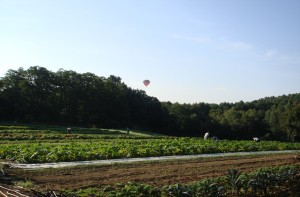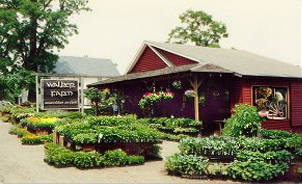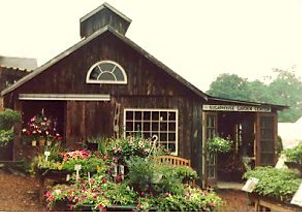In the mid‐90s when our county was planning to site a landfill on part of our land and the land of the KOA Campground next door, the Waste District Supervisor paid us a visit and suggested that they would help us move our farm, which has been in our family line since 1770, a couple of miles up the road to a defunct dairy farm that had many more acres. It’s hard for some folks to realize the attachment that farmers have to their fields and pastures, a feeling that transcends monetary value. I suppose it has to do with the “poor farmer” image that used to be around much of the 1900s. Well, we turned the county down and eventually won the battle, after a couple of years thanks to the support of the community and a lot of political action. Now we’re back to a regular old farm just trying to get along with the elements, critters and customers who want tomato plants at the end of March.
the Waste District Supervisor paid us a visit and suggested that they would help us move our farm, which has been in our family line since 1770, a couple of miles up the road to a defunct dairy farm that had many more acres. It’s hard for some folks to realize the attachment that farmers have to their fields and pastures, a feeling that transcends monetary value. I suppose it has to do with the “poor farmer” image that used to be around much of the 1900s. Well, we turned the county down and eventually won the battle, after a couple of years thanks to the support of the community and a lot of political action. Now we’re back to a regular old farm just trying to get along with the elements, critters and customers who want tomato plants at the end of March.
When my wife and I returned from suburbia to the family farm in the early ‘70s, we seemed to learn everything the hard way. Luckily, my grandfather was a living encyclopedia of agriculture and he taught us a lot about caring for the land and that led us to explore books on organic farming. The local old timers had paved the way for us with their belief in rotations, liming, cow manure and even natural additives like rock phosphates. Through the years we continued to learn more about organics and refined our approach to taking care of the land and pursuing our goal to leave the farm a better place for the next generation. I’m not going to say that we did everything right because we certainly made a lot of mistakes, (we make mistakes now, that’s farming), but in the late ‘90s, just before the USDA came out with the nationwide organic standards, we made the decision to become certified organic. Organics had a rather loose definition, varying from state to state in the ‘70s and ‘80s. It was nice to see some consistent standards for the whole country. Some people think that the National Organic Standards Board which decides the rules for certification is a bunch of government bureaucrats. A while ago, I testified at their semi‐annual meeting which was being held in Providence, RI on behalf of compostable mulches like “Biotello”. I was pleased to see a nice mix that included farmers and environmentalists, people like you and me.
Some people will tell you that the certification process can be difficult and there are some rules that just don’t make sense and, to be honest, they would be right! But as in all relationships, the commitment to a set of values that you hold dear is always worth the effort. We’re fortunate in Vermont to have lots of new young farmers committing to dairy, CSAs and all sorts of diversified agriculture. Some are happy to carry the “Locally Produced” banner while others will work towards “Certified Naturally Grown”. Those are good goals that will certainly help strengthen our state’s unique agricultural network. But for our farm, there is only one goal and that is a lifelong process that makes us strive to be the best that we can be. Certified Organic helps us work towards that end. The certification process helps us improve our soils, protect our environment, supply healthy, safe food, all under a third party verification system that can leave no doubt. We think that is the best path for us.
The years have passed and we now have customers who were kids when we started, bringing their own young children to the farm. That’s a satisfying sight. Knowing that these people trust us to provide their children with healthy, safe, organic food is quite a responsibility. School groups visit our farm every spring and I’m amazed at the knowledge kids now have about agriculture thanks, in large part I think, to funds from The Strolling of the Heifers. When first graders ask me about rotation and chisel plows, it’s pretty amazing. Every now and then I catch a customer reading our framed Certification on top of the produce cooler in the farmstand. I’m proud of that piece of paper. For me, certification means we are trying to be the best.









